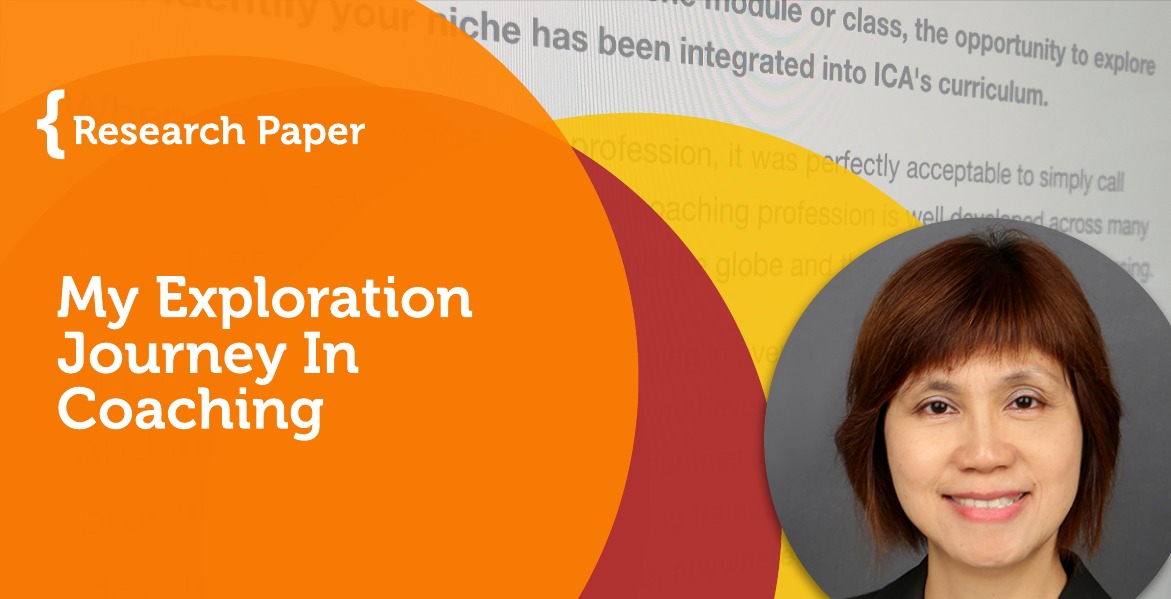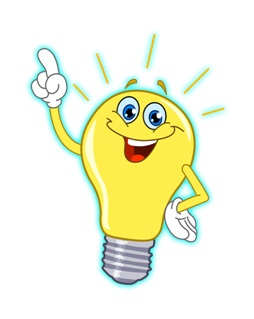 Research Paper By Yin Leng Choy
Research Paper By Yin Leng Choy
(Career and Life Coach, SINGAPORE)
Creating the “Ah-Ha” moment.
 What is the “ah-ha” moment? It is a spark, a sudden realization, or awareness that comes to the client. This sudden realization or awareness dispels the underlying beliefs of the clients and or opens up alternatives and opportunities for them. It can be said it is an ‘enlightening’ stage of the coaching process. What can cause that to happen? How to create that moment? To do that, we have to explore the process of coaching.
What is the “ah-ha” moment? It is a spark, a sudden realization, or awareness that comes to the client. This sudden realization or awareness dispels the underlying beliefs of the clients and or opens up alternatives and opportunities for them. It can be said it is an ‘enlightening’ stage of the coaching process. What can cause that to happen? How to create that moment? To do that, we have to explore the process of coaching.
Coaching is a partnership between the client and coach to journey into the discovery of the client. The coach asks powerful questions to draw forth the self-awareness of the inherent potential of the client to come to his/her solutions. Before reaching or believing that s/he (the client) has the inherent potential to unlock the solutions to his/her problems, the coach has to display a whole lot of work to lead the client into discovering this inherent potential.
To do just that, questions are important to move clients into the self-discovery mode. Why questions? Questions hold the power to cause us to think, create answers we believe in, and motivate us to act on our ideas. Asking moves us beyond passive acceptance of what others say, or staying stuck in present circumstances, to aggressively applying our creative ability to the problem.
Pinning the goal
A coaching session without a goal is like shooting an arrow to nowhere. Having a crystal clear goal will enable the arrow to hit the bull’s eye thereby opening all possible explorations directed to achieve the goal. The goal should be that of the client’s. The job of the coach is to help the client to identify, to reconfirm what the client wishes to accomplish. What is the importance of accomplishing the goal means to the client? What is a successful outcome means to the client? As a coach, we continue in the direction set forth by the client. It is like peeling an onion. After the first layer, you need to peel another layer yet another till you see the core or the root of the issues.
Being With the Client
This constitutes the entire bulk of the coaching journey. To be ‘with the client’, a coach has to foster a bond with the client. This is of utmost importance. Would anyone want to share their issues or problems with one who just meets for the first time? What is the comfort level, a client has with the coach and vice versa?
Even before we can pin the goal, we have to, at the very beginning, try to break the wall between the coach and the client. There should be a few exchanges to break the ice by reassuring the client that this is a confidential and safe space. Take a short time to build rapport with the client by engaging the client and making the client comfortable and at ease. Once this is established, the coach has to continue to create trust and intimacy with the client by acknowledging and respecting the client’s agenda. Throughout the coaching process, the coach continues to support and encourage the client to fully express him/herself. Generally, allow 80% of the conversation to the client. The remaining 20% is for the coach to acknowledge, support, and encourage the client to explore and to express him/herself. Allowing silence is important and listening to this ‘sound of silence’ may give you a clue to create the ‘ah-ha’ moment. This is the moment for the client to run all ideas and possibilities in the mind while giving the coach time to think of questions to ask to ‘lure’ the client into his/her discovery of the solution to him/herself. Acknowledging the client means noticing and reflecting on the client making his/her aware of what made him/her behaved and reacted this way.
Being with the client means we must not only physically but also mentally be with them throughout the session. The coach has to enter the session with a mind blank with any pre-formed judgment and prejudice or devoid of any emotions from prior events that happened to the coach. The coach has to continuously display empathy and curiosity towards the client by asking questions to discover more. The coaching approach forces your conversations to become less about your thoughts, your input, and how you can steer the dialogue around to the answer you think will work. You start listening—really listening—to the other person. You decrease what you say so that others can increase. And that’s where the magic happens: the more you listen, the more you see how capable they are, how much they can do with a little encouragement, and what wonderful individuals they are. The more you ask, the more you love. Significant questions go a little deeper than icebreakers: they make people think about something important, draw out a person’s identity or touch their deepest desires. These questions are an excellent way to launch a coaching conversation and can lead to an Ah-ha moment.
The coach must after ‘peeling the first layer of the onion’, continues to proceed to the next layer. Being observant enhances the discovery of the ah-ha moment. Noticing any shift in the energy of the client when something or suggestion pops up. What is this sudden shift of energy? Where is it coming from? Continue to be exhibit curiosity and accept the client’s response and at times use the client’s language to explore the possibilities of the client’s intent.
Here, would like to share my coaching experiences arriving at the Ah-ha moment.
Scenario 1
The client wanted to explore why she is not enjoying the Mentor Coaching. She dreaded attending the session and she felt relief and happiness when it was over. It was not like she did not like coaching; after all, she paid to attend lessons so that she could become a qualified coach. The importance to her is how she could become a qualified coach if she does not enjoy Mentor Coaching. Her measure of success would be able to understand the emotions behind her not enjoying the coaching session.
Coach explored with her what is enjoyment to her. She said it was something that would bring her joy and she felt happy doing it. She also mentioned coaching ever brought her joy because she enjoyed the difference she made in people’s life. She enjoyed helping others to find their solutions after she coached them. When the coach asked her what was the difference then, that moment when she enjoyed coaching and this moment that she didn’t. There was a pause. She was thinking and analyzing. This is the moment! The moment of ‘silence is golden’ and as a coach, listening to this ‘sound of silence’ and observing her body and facial language is of utmost importance. Then she let go of a deep sigh. Seized the moment to ask her what was this about.
She looked at the coach in the eye and said with a smile, “As much as I like coaching, I don’t enjoy the many eyes on me during Mentor Coaching. I felt like I was heavily scrutinized and that’s why I didn’t enjoy it. “
‘So what do you think you would do to make you enjoy it?” Coach asked. Again, she paused but quickly she said, “ I think I need to focus on my client instead of thinking of people were watching me.” This is a great awareness.
To cut the story short, the ‘Ah-ha’ moment came during the moment of silence when the client was thinking.
Scenario 2
The realization came when the coach caught hold of the chuckle the client let out when they were exploring why the client was doubtful about her coaching journey. She chuckled when she mentioned the word “investment”. The coach caught hold of this and explore with her what she meant by “investment” and what is the meaning of her chuckle. At the very moment, she realized that yes, the doubt she has for her coaching journey came from her underlying belief that she has spent a substantial amount of money in it and she was thinking of this as an investment rather than her initial passion for this trade.
Many times, what the client brings forth to us, coaches, is the tip of the iceberg. We need to explore and deep dive to discover what lies beneath. They also hold the solutions or answers to their problems but they do not want to face the reality. This is because deep down inside them, they are hoping for some different outcomes.
Being with the client includes a whole lot of physical and mental presence with the client.
Scenario 3
The client wanted to resume her morning walking regime but was not able to do so under the circuit breaker (or lockdown) period due to COVID-19. She was complaining she spent so much time just watching Netflix and on social media. She hoped to find a way to continue her walking regime.
Coach partnered her to explore what exercises can she do in-house instead of outdoors. She realized that yes, she could continue her exercises in-house. With this realization, her train of thoughts led her to another discovery. She could make use of the internet to search for some appropriate walking exercise apps to follow while at home. This was another ‘ah-ha’ moment that came forth with the realization of “what else can you do in-house instead of outdoor….?”
Action
After arriving at the “ah-ha” moment, the coach has to get the commitment of the client to set that into action. Helping the client to move forward and designing the best methods of accountability for the client. With the permission of the client, the session could come to a closure.
The “ah-ha” moment is found within the client. The coach is there to lead the client to look inside to find it. There is no short cut to arrive at the “ah-ha” moment. It requires a whole lot of ‘Being with the client’ to seize this moment. It comes with, as my Mentor Coach always said to us, Practice, Practice, and More Practice.
So, Happy Practicing and Happy Coaching!
Reference:
Coaching Questions-A Coach’s Guide to Powerful Asking Skills By Tony Stoltzfus